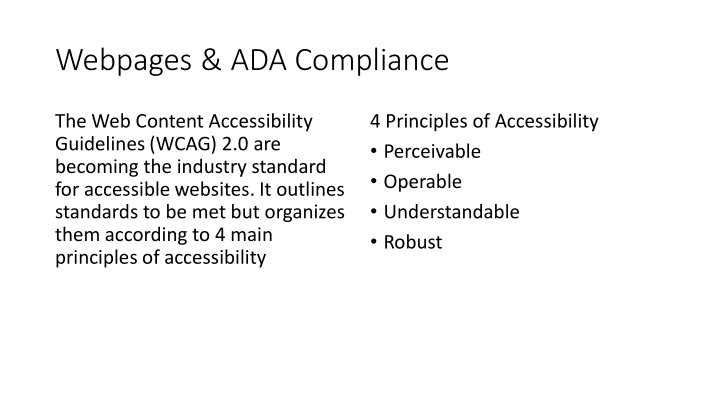



Webpages & ADA Compliance The Web Content Accessibility 4 Principles of Accessibility Guidelines (WCAG) 2.0 are • Perceivable becoming the industry standard • Operable for accessible websites. It outlines • Understandable standards to be met but organizes them according to 4 main • Robust principles of accessibility
Headings • The header tags (<h1><h2> etc) should be used instead of style elements like font size and bolding. • Headers must also be used logically with only one Heading 1 per page and the rest of the headers ordered logically by number • In the CMS, don’t use Heading 1
Images • Alt tags provide text to describe images on your web page • Make sure to convey any meaning in the alt tag that the picture would provide for a sighted user.
Links • Links should be accessible for users not using a mouse • Link text should use words that briefly convey what the person will get if they click the link. • Don’t use “Click Here,” “More” or the URL as link text • Always fill out the Title field for each link you create • Content from Title field will hover above link when moused over.
Tables • Tables that present data in a column and row format must be appropriately marked up in the CMS. • Include a Caption Tag for the whole table • Insert/Edit Table > Select Table Caption check box • Insert Caption on New Table
Tables, again. • Tables are read from left to right and line by line • Any column or row headers must be marked so the content is read correctly • Right-click in the header • Select Cell > Table Cell Properties • Set Cell Type to Header • Set Scope to Either Column or Row
ADA Compliance Resources Academic Accommodation Services: http://www.kumc.edu/accessibility Download a Copy of this Presentation: http://www.kumc.edu/cms-training
Recommend
More recommend